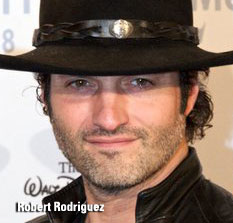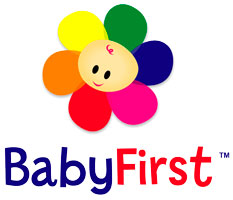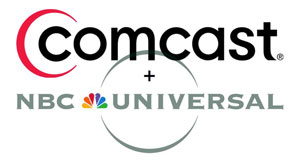 The announcement is welcome by many…but is this a revolution or just another small step?
The announcement is welcome by many…but is this a revolution or just another small step?
There’s been a lot of positive publicity about ComCast/NBC’s recent announcement of its upcoming launch of a whole spectrum of “diverse” cable nets, including two specifically for Latinos: El Rey, under the direction of “outlaw” filmmaker Robert Rodriguez, and BabyFirst, from Spanish-language programmer Constantino “Said” Schwarz.
Of course this is good news, especially in the context of growing media interest in the English-speaking Latino audience. ABC recently announced a partnership with Univision for a 24-hour news channel with Latino focus, and virtually every broadcast network has announced development deals with Latino stars and programs with Latino actors and themes. It seems that finally, after years of staring at the demographics and doing nothing, the moguls of the media are beginning to get the idea: English-language programming for Latinos is the wave of the future.
But just how big a ‘sea change’ is this? It’s worth noting–and we’re not the first–that all four of these “ethnically diverse” launches are the result of an agreement that ComCast made with the FEC, where they promised to launch ten independently owned and operated channels, four of which would be majority-owned by African Americans, and two of which would be majority-owned by American Latinos. So this was not simply or only a realization of market realities or a sudden love of diversity.
 There are other considerations as well. The as-yet-unnamed news channel from ABC/Univision has already said they will be drawing entirely from existing staff, which means relatively few new jobs or opportunities for Latinos (not already employed) in front and behind the camera, and it begs the question about Latino writers. Is this going to be another “Rob” situation, where the Latinos are all out front but non-Latinos are still scripting the show and molding the content? What’s more, this network is going to be based in Miami; does that imply an editorial slant that favors the Cuban-Latino culture that’s dominant in Florida, or will there be stories uniquely of interest to Southwest and Northeast communities as well?
There are other considerations as well. The as-yet-unnamed news channel from ABC/Univision has already said they will be drawing entirely from existing staff, which means relatively few new jobs or opportunities for Latinos (not already employed) in front and behind the camera, and it begs the question about Latino writers. Is this going to be another “Rob” situation, where the Latinos are all out front but non-Latinos are still scripting the show and molding the content? What’s more, this network is going to be based in Miami; does that imply an editorial slant that favors the Cuban-Latino culture that’s dominant in Florida, or will there be stories uniquely of interest to Southwest and Northeast communities as well?
Meanwhile, BabyFirst–though a terrific idea–is coming to air so quickly (as early as April 2012, just a matter of weeks from now) that one has to wonder how much of the programming will simply be off-the-shelf shows given a quick “Latino polish,” rather than truly crafted to the market. (Many theme-based nets have had to suffer through the same challenge, which explains BBC America, showing just about any movie with a British actor in it, or Viacom’s SyFy Channel that features pretty much anything that vaguely resembles fantasy or science fiction, up to and including wrestling and Ghost Hunters International. It’s a difficult trap not to fall into, given the challenge of filling 24 hours of programming every day–and quickly.)
“an action-packed, general entertainment network in English for Latino and general audiences that includes a mix of reality, scripted and animated series, movies, documentaries, news, music, comedy, and sports programming…”
And then there’s El Rey. We’re also huge fans of Rodriguez and his work, but his personal output represents a pretty narrow, violent, and rough-and-tumble action-picture point of view, closer to Spike TV than mun2. The description provided by Comcast called El Rey, “an action-packed, general entertainment network in English for Latino and general audiences that includes a mix of reality, scripted and animated series, movies, documentaries, news, music, comedy, and sports programming. The El Rey network will include programming that features Hispanic producers, celebrities and public figures.” All good, but the “action-packed” and “general audience” parts imply a lot more Dusk to Dawn-type programming and not a heck of a lot of A Better Life. Here’s hoping there will be room for both, though it will be a while before we see it: El Rey’s current launch commitment is “by January 2014.”
 (It’s also not clear just how hungry the national Latino audience might be for Latino-culture programming. Just one example: Q’Viva: The Chosen, a real, life, and very current celebration of Latino music empowered by Jennifer Lopez and Marc Anthony, has not performed as well in its Spanish-language version as Univision had hoped, and it may be significant that Fox decided–belatedly—to air the English-language version very late in the season, in the Saturday-night block that’s generally seen as a ‘dead zone’ for programming. It remains to be seen how well viewers take to it when it premieres in early March.)
(It’s also not clear just how hungry the national Latino audience might be for Latino-culture programming. Just one example: Q’Viva: The Chosen, a real, life, and very current celebration of Latino music empowered by Jennifer Lopez and Marc Anthony, has not performed as well in its Spanish-language version as Univision had hoped, and it may be significant that Fox decided–belatedly—to air the English-language version very late in the season, in the Saturday-night block that’s generally seen as a ‘dead zone’ for programming. It remains to be seen how well viewers take to it when it premieres in early March.)
Two more sobering facts: hours of original programming and coverage. We should probably keep in mind that even the biggest broadcast networks are producing only a few hours of original programming a week, and only for a portion of the year. The most active cable nets, like A&E, AMC, TNT, and USA, produce as little as half a dozen hours of programming in any given week, for seasons lasting as few as six and ten weeks. It’s quite likely that both BabyFirst and El Rey–like the networks that ComCast already has, including E!, G4, and the Style Network, as well as the new channels from Magic Johnson and Sean Combs–will be relying heavily on existing, repurposed movies and TV shows to fill the vast majority of their 24-hour schedule. That’s nothing new considering the challenge they’ll be facing, but still, we’re not likely to see a flood of brand-new Latino-created material any time soon.
 And then there’s the issue of market penetration. ComCast is the largest single supplier of cable services–it reaches about 23 million customers in 40 states, or 40% of the 58 million basic cable subscribers in the U.S. But because these new channels will be owned completely by ComCast, it may be difficult to get them onto rival cable suppliers that serve the other 35 million. It’s hard enough for the new ‘unaligned’ channels to acquire power-positions on the dial, even when they’re backed by blockbusters like Opea Winfrey (OWN) or Al Gore (Current-TV). E!, for instance, has had some pretty good luck getting on other franchises, but it’s pretty hard to find–as an example–G4 or Style on a non-ComCast provider’s roster.
And then there’s the issue of market penetration. ComCast is the largest single supplier of cable services–it reaches about 23 million customers in 40 states, or 40% of the 58 million basic cable subscribers in the U.S. But because these new channels will be owned completely by ComCast, it may be difficult to get them onto rival cable suppliers that serve the other 35 million. It’s hard enough for the new ‘unaligned’ channels to acquire power-positions on the dial, even when they’re backed by blockbusters like Opea Winfrey (OWN) or Al Gore (Current-TV). E!, for instance, has had some pretty good luck getting on other franchises, but it’s pretty hard to find–as an example–G4 or Style on a non-ComCast provider’s roster.
All in all, there’s good reason to celebrate: Latinos as a “marketing block” are getting more attention, and that’s almost certain to continue in the months and years to come. But is the announcement of two new cable channels a revolution or just another step in the right direction? That remains to be seen.
Check out The Wrap’s point of view on the ComCast announcements here.
Photo: ©2011 Angela María Ortíz S.









